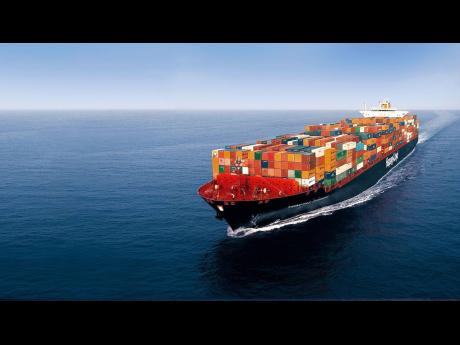Understanding sea freight and its impact on your business (Pt 2)
In part two of this discussion, we will explore the benefits and potential downsides of sea freight which businesses and individuals should consider when making transportation decisions.
The types of goods that can be transported by sea freight have been expanded and with fewer restrictions, whereas airfreight has rules about the shipment of flammable items and other hazardous materials.
Additionally, “Ocean freight movements also offer their customers the opportunity for trans-shipment and multimodal movement to include land, rail and waterways movement,” said Beverly Johnson, CEO and managing director of JLB International Limited.
“It further offers the best solution for small shipments to be containerised safely, yet moved as less-than-container loads by sharing container space, known as cargo consolidation, where multiple shippers share the same container in moving their goods to a common destination or transit point,” Johnson continued.
“Depending on the vessel type used, cargo insurance are charged at competitive rates, giving the customers assurance should there be damages or the need to claim for loss of goods,” she said.
Generally, shipping by sea is also a much cheaper option when compared to standard airfreight, which can be twice as expensive, with further charges for express delivery.
However, sufficient planning can help to improve the usefulness of sea freight as “most ocean freight carriers have fixed sailing schedules and transit time, which allow manufacturers and importers to plan, effectively, the movement of goods,” Johnson said.
For the socially responsible, shipments via sea also leave a lower carbon footprint and produces less emission per tonne than if one were to use airfreight. Also, increasing regulations by the International Maritime Organization will see a further reduction in the emission of greenhouse gases by seafaring vessels with the use of cleaner fuels.
However, there are some drawbacks to using ocean freight. Chief among these is the wait time. Transportation by sea takes significantly more time than airfreight, which can make deliveries in a couple of days in many cases. Ocean freight can take up to five times as long, depending on the destination of the goods. For those who choose to use this method, it is important to factor in the longer delivery time that it will take for goods to arrive. Additionally, ocean freight is sometimes more susceptible to external factors, such as customs delays, port congestions and bad weather, which are considerations to be bear in mind.
Johnson said, “The main disadvantage of ocean freight is the multiple charges that are associated with the handling of these shipments. Ocean freight management, carriers, ports, intermediary all impose their fees on a single shipment; all of this, in addition to the customs duties and taxes which will be levied on the consignment by the Customs Department and other government-related agencies for permits and licences.
“Importers and exporters must therefore ensure that they carry out an effective cost analysis of all the charges associated with the consignment, in an effort to ascertain if the product can bear the cost at the retail point, regardless of the terms of sales or the terms of delivery,” she continued.
While ocean freight has increased delivery times and involves factors which may lead to less-than-smooth transport, it is the preferred method for the majority of businesses due to the low cost, relative safety, and the ease of transportation.

